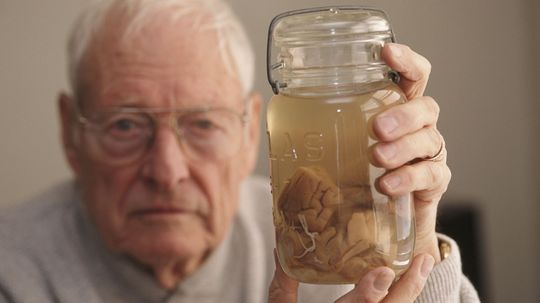Table of Contents
Delve into the enigma surrounding the destiny that befell Albert Einstein’s cerebral matter upon his demise, as we embark on a journey through the annals of scientific curiosity and human fascination. Brace yourself for an exploration of unparalleled magnitude, where the boundaries between life and death blur in the wake of one man’s extraordinary intellect.
A Puzzling Odyssey Begins
Upon departing this mortal realm, Einstein’s brain embarked on a perplexing odyssey, shrouded in mystery and intrigue. Contrary to conventional post-mortem practices, which often consign brains to oblivion within formaldehyde-soaked jars or cold storage facilities, fate had something far more peculiar in store for this prodigious organ.
Einstein’s gray matter was not destined for such mundane fates; instead, it found itself thrust into an astonishing narrative that would captivate scientists and laymen alike. The brain became a relic—a sacred artifact—imbued with both scientific potential and mythological allure.
An Unlikely Custodian Emerges
Intriguingly enough, it was not esteemed neurologists or renowned anatomists who assumed guardianship over this precious commodity but rather Thomas Harvey—an ordinary pathologist whose audacity knew no bounds. In defiance of ethical conventions governing medical research at the time, Harvey clandestinely absconded with Einstein’s brain during autopsy proceedings.
This audacious act marked only the beginning of an unconventional saga that would span decades. Harvey meticulously dissected and preserved sections of Einstein’s brain without seeking proper authorization from either family or colleagues—a brazen disregard for established protocols befitting his insatiable quest to unravel secrets hidden within those convoluted neural pathways.
A Quest for Understanding
Harvey’s relentless pursuit of knowledge led him to distribute fragments of Einstein’s brain to various researchers across the globe, hoping that their collective efforts would unlock the secrets harbored within. Alas, his audacious endeavor yielded little in terms of scientific breakthroughs.
While some studies suggested subtle anatomical differences between Einstein’s brain and those of average individuals, no definitive conclusions were reached regarding the source or significance of his unparalleled genius. The enigma persisted, leaving scientists yearning for a deeper understanding.
A Final Resting Place
After decades spent traversing continents and laboratories, Einstein’s cerebral matter finally found its way back home—laid to rest alongside its illustrious owner in Princeton University Hospital. In 1998, Harvey returned what remained of this extraordinary organ to its rightful place—a symbolic reunion marking an end to a tumultuous journey that had spanned more than four decades.
An Unresolved Enigma
The fate that befell Albert Einstein’s brain after death remains an unresolved enigma—an enduring testament to humanity’s ceaseless quest for knowledge and our insatiable desire to unravel the mysteries hidden within ourselves. As we ponder upon this remarkable tale, let us not forget that even in death, great minds continue to ignite curiosity and inspire generations yet unborn.




